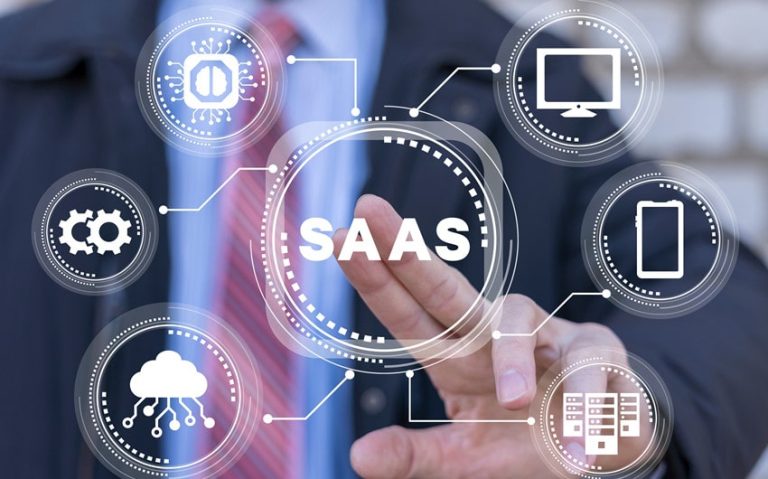The healthcare industry has undergone a profound transformation over the past decade, driven by remarkable advancements in technology. Healthcare marketing plays a pivotal role in ensuring that healthcare providers remain visible online, connecting patients with the care they need. Optimizing healthcare websites for search engines helps institutions attract more patients by increasing online visibility, which is crucial in today’s digital age.
According to Statista, the U.S. hospital market is projected to reach a revenue of $1,501 billion by 2024. Additionally, the market is forecasted to grow at a yearly rate of 3.46% between 2024 and 2029. By 2029, it is projected that the market will reach a volume of $1,779 billion.
Central to this growth are software solutions, which have become essential in enhancing efficiency, accuracy, and the overall quality of patient care. These technological tools are revolutionizing healthcare institutions, making operations smoother and improving outcomes for patients.
In this article, we explore three key software solutions that are driving these improvements and transforming the healthcare landscape.
Electronic Health Records Systems
Electronic Health Records (EHR) systems have become essential for modern healthcare institutions, serving as digital versions of patients’ paper charts. These systems enable instant and secure access to patient information for authorized users.
As highlighted by Forbes, the widespread adoption of EHRs has surged from 10% to over 90%, primarily due to the EHR Incentive Program. This program allocated $35 billion in federal incentives, significantly motivating healthcare providers. As a result, they have not only adopted but also effectively utilized EHR systems, revolutionizing the industry.
This widespread adoption has significantly enhanced patient care by offering accurate, current, and thorough patient information directly at the point of care. The extensive access to data helps healthcare providers make well-informed decisions, ultimately resulting in improved patient outcomes.
Moreover, EHRs promote coordination by enabling the seamless exchange of patient information among various healthcare providers, enhancing the continuity of care. The automation of administrative tasks like scheduling and billing reduces staff workload and errors, thus boosting efficiency.
Additionally, EHR systems enable the analysis of extensive patient data to enhance treatment outcomes and identify public health trends.
Visitor Management Software
Visitor Management Software (VMS) is increasingly becoming essential in healthcare institutions. In 2022, hospitals across the United States recorded approximately 537 million outpatient visits. The majority, about 519 million visits occurred in general medical and surgical hospitals, Statista reports.
Managing such a large influx of patients efficiently presents a considerable challenge. However, Visitor Management Software effectively addresses this challenge by automating visitor registration, monitoring visitor movements, and providing real-time notifications to staff. This software enhances safety and ensures efficient facility operations as well as contributes to a seamless patient experience.
Greetly notes that visitors can pre-register online, receive digital badges, and quickly check in upon arrival, minimizing administrative burdens for healthcare staff. Furthermore, VMS aids in compliance with regulatory requirements by maintaining detailed logs of all visitor activities, which can be crucial for audits and investigations.
By integrating with other healthcare systems, VMS contributes to a safer and more efficient healthcare environment. Ultimately, this supports the institution’s overall mission of providing high-quality patient care.
Telemedicine Platforms
Telemedicine platforms have transformed healthcare delivery, especially in remote and underserved regions. The National Rural Health Association states that rural areas have a significant shortage, with only 30 specialists per 100,000 residents. In contrast, urban communities have 263 specialists per 100,000 residents.
In response to this disparity, telemedicine platforms have emerged as a vital solution. These platforms enable healthcare providers to conduct consultations, diagnose conditions, and recommend treatments through video calls and online messaging.
The National Library of Medicine reports that between March 2020 and February 2022, there were over 850,000 telemedicine visits. Approximately 62% of these visits were conducted via video, with 38% conducted via telephone.
This statistic highlights how telemedicine can improve healthcare accessibility for patients facing geographic or mobility barriers to traditional healthcare facilities.
It also reduces the burden on healthcare facilities by allowing non-critical consultations to be handled remotely. This not only saves time for both patients and healthcare providers but also reduces the risk of spreading infectious diseases.
Telemedicine platforms have also been instrumental during the COVID-19 pandemic, ensuring that patients receive continuous care while minimizing physical contact.
FAQs
How does telemedicine work?
Telemedicine typically involves the use of video conferencing, online messaging, or telephone consultations to connect patients with healthcare providers. Medical history, symptoms, and diagnostic tests may be shared electronically to facilitate diagnosis and treatment. Patients benefit from the convenience of accessing healthcare from their homes.
How is an EHR different from an Electronic Medical Record (EMR)?
EHRs contain comprehensive patient health information from multiple providers, including medical history, diagnoses, medications, treatment plans, allergies, immunization records, radiology images, and lab results. They support care coordination across organizations. EMRs are used within a single practice for diagnosis and treatment.
How does a Visitor Management System work?
A VMS typically works by allowing visitors to check in using a self-service kiosk, tablet, or mobile app. Visitors provide their information, such as name, contact details, purpose of visit, and who they are meeting. The system then prints a visitor badge and notifies the host of the visitor’s arrival.
In summary, the integration of these software solutions is driving efficiency and innovation in healthcare institutions.
These technologies are enhancing patient care and results, while also simplifying administrative processes and improving the overall operational efficiency of healthcare facilities.
As technology advances, these software solutions will increasingly shape the future of healthcare.







